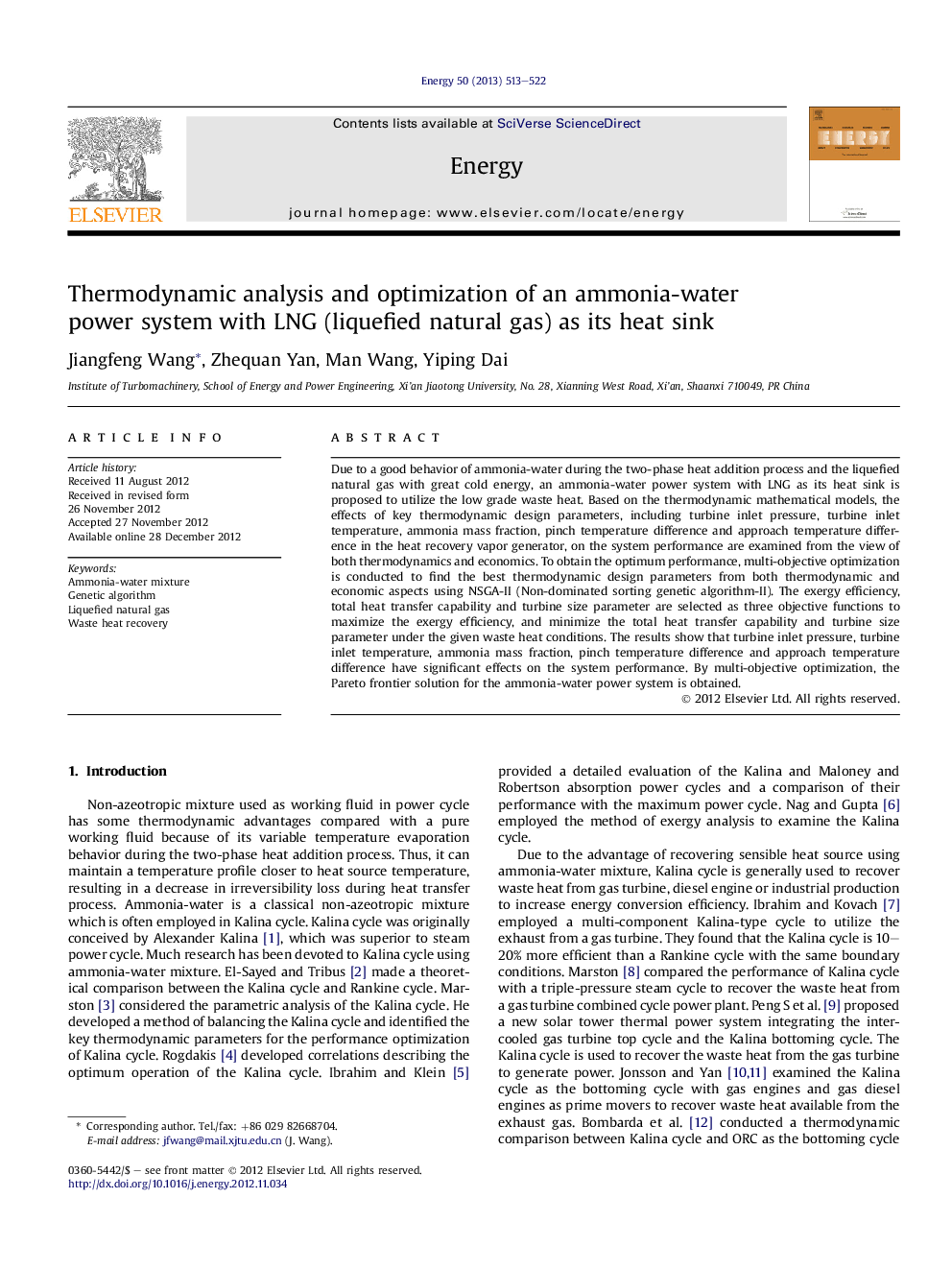| Article ID | Journal | Published Year | Pages | File Type |
|---|---|---|---|---|
| 1733262 | Energy | 2013 | 10 Pages |
Due to a good behavior of ammonia-water during the two-phase heat addition process and the liquefied natural gas with great cold energy, an ammonia-water power system with LNG as its heat sink is proposed to utilize the low grade waste heat. Based on the thermodynamic mathematical models, the effects of key thermodynamic design parameters, including turbine inlet pressure, turbine inlet temperature, ammonia mass fraction, pinch temperature difference and approach temperature difference in the heat recovery vapor generator, on the system performance are examined from the view of both thermodynamics and economics. To obtain the optimum performance, multi-objective optimization is conducted to find the best thermodynamic design parameters from both thermodynamic and economic aspects using NSGA-II (Non-dominated sorting genetic algorithm-II). The exergy efficiency, total heat transfer capability and turbine size parameter are selected as three objective functions to maximize the exergy efficiency, and minimize the total heat transfer capability and turbine size parameter under the given waste heat conditions. The results show that turbine inlet pressure, turbine inlet temperature, ammonia mass fraction, pinch temperature difference and approach temperature difference have significant effects on the system performance. By multi-objective optimization, the Pareto frontier solution for the ammonia-water power system is obtained.
► An ammonia-water power system with LNG as its heat sink is proposed. ► The effects of key parameters on the system performance are examined. ► Multi-objective optimization is conducted to obtain optimum system performance.
